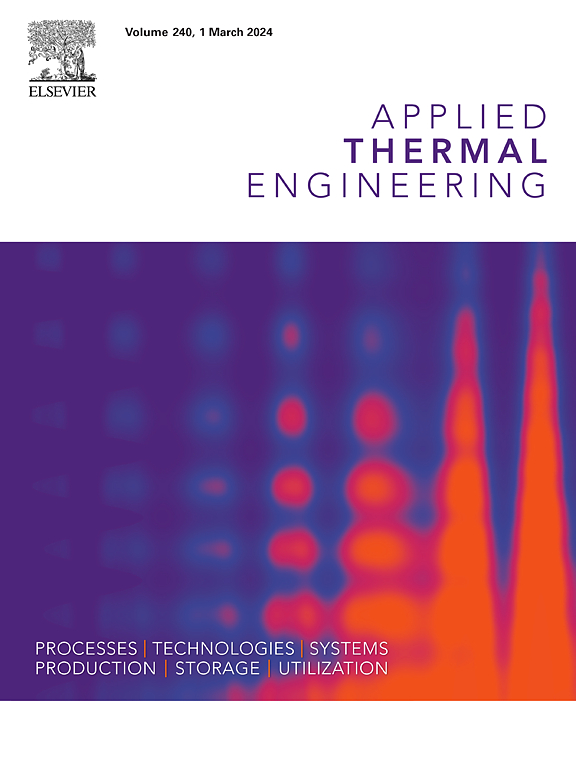A novel organic Rankine cycle-ejector booster refrigeration cycle for low-temperature sources
IF 6.1
2区 工程技术
Q2 ENERGY & FUELS
引用次数: 0
Abstract
In this study, a detailed comparison was made between the Organic Rankine Cycle-Vapor Compression Refrigeration Cycle (ORC-VCRC) and the novel Organic Rankine Cycle-Ejector Booster Refrigeration Cycle (ORC-EBRC), which was developed as an alternative, using the environmentally friendly refrigerant cyclopentane. Energy and exergy analyses were performed for the ORC-EBRC cycle. A renewable energy source was used for the low-temperature heat source (75 °C–115 °C) on the organic Rankine cycle (ORC) side. The boiler, condenser, evaporator temperatures and isentropic efficiency values of the compressor and turbine were examined over specific ranges, and variations in coefficinet of performance (COP), exergy efficiency, total mass flow rate, compressor compression ratio (CCR), and expander expansion ratio (EER) were obtained. The results indicate that the ORC-EBRC cycle is a more suitable choice in terms of energy and exergy compared to the ORC-VCRC cycle. For a boiler temperature of 100 °C, compared to the ORC-VCRC cycle, the ORC-EBRC cycle achieved increases of 17.56 % in COPsystem, 20.21 % in exergy efficiency, and a decrease of 10.04 % in total mass flow rate. For a condenser temperature of 40 °C, the increases were 17.15 % in COPsystem, 20.05 % in exergy efficiency, and a decrease of 9.11 % in total mass flow rate. For an evaporator temperature of −15 °C, the increases were 17.91 % in COPsystem, 20.13 % in exergy efficiency, and a decrease of 11.35 % in total mass flow rate. It was determined that changes in the isentropic efficiency values of the compressor and turbine increased the COPsystem and exergy efficiency values, while decreasing the total mass flow rate values.
求助全文
约1分钟内获得全文
求助全文
来源期刊

Applied Thermal Engineering
工程技术-工程:机械
CiteScore
11.30
自引率
15.60%
发文量
1474
审稿时长
57 days
期刊介绍:
Applied Thermal Engineering disseminates novel research related to the design, development and demonstration of components, devices, equipment, technologies and systems involving thermal processes for the production, storage, utilization and conservation of energy, with a focus on engineering application.
The journal publishes high-quality and high-impact Original Research Articles, Review Articles, Short Communications and Letters to the Editor on cutting-edge innovations in research, and recent advances or issues of interest to the thermal engineering community.
 求助内容:
求助内容: 应助结果提醒方式:
应助结果提醒方式:


